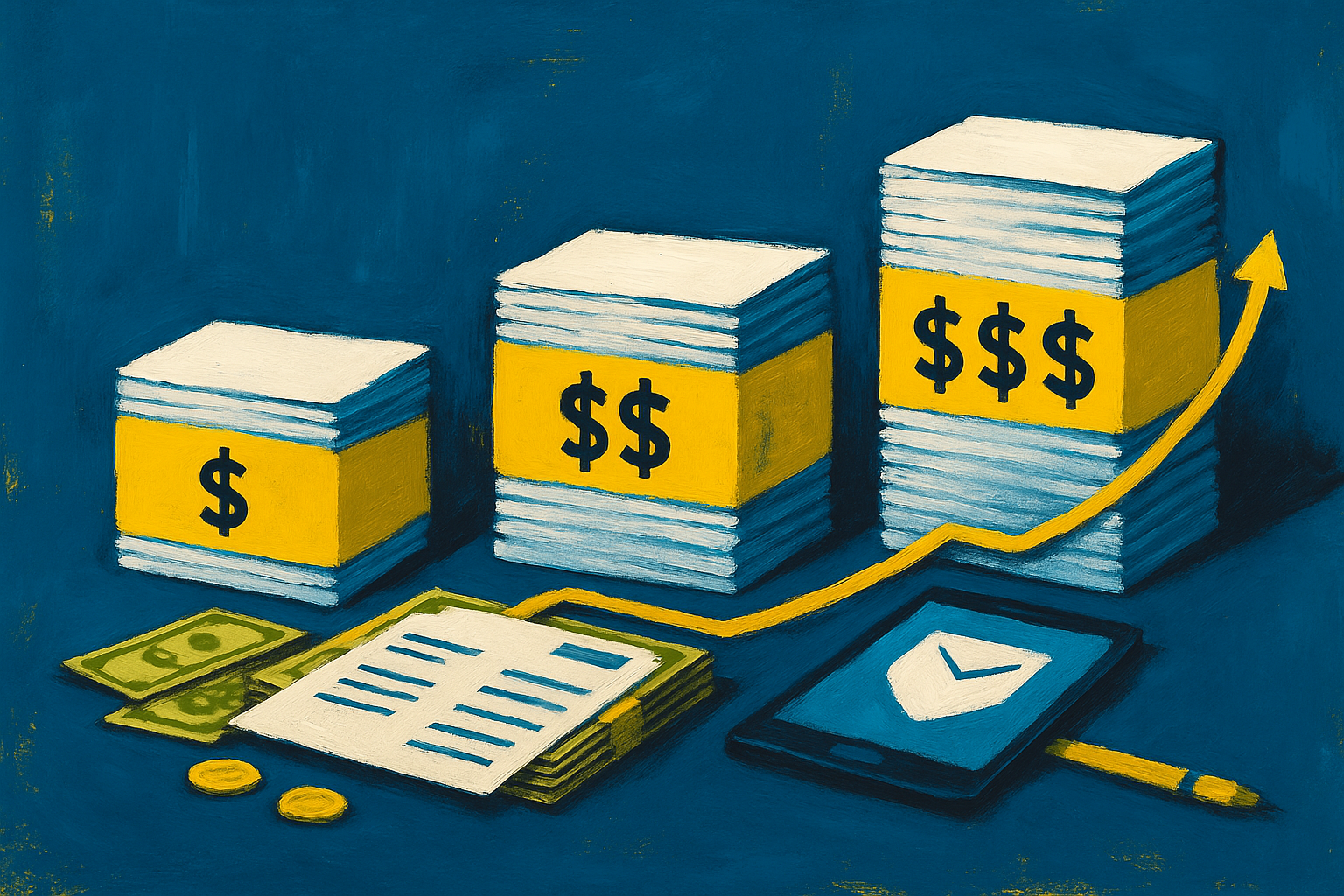Political Mailer Pricing Guide For Every Campaign Size
Political Mailer Pricing Guide For Every Campaign Size
Political mail remains one of the most effective ways to reach voters during election season. No matter the size of your campaign, understanding the true cost of campaign mailers is critical for budget planning and making your outreach count. The key to successful direct mail isn’t just about design and message—it’s about knowing how much every postcard, letter, or brochure will cost from concept to mailbox.
In this comprehensive political mailer pricing guide for every campaign size, we’ll break down the main pricing factors, share real-world cost ranges, and offer expert strategies that help both small local candidates and statewide campaigns save money while maximizing impact. Whether you’re mailing a few thousand voters or a million, this guide will help you plan smarter, avoid common budget traps, and deliver results that move votes.

Why Mailer Pricing Varies by Campaign Size
The price of political mail is not one-size-fits-all. In fact, several important factors cause pricing to vary significantly from one campaign to another. The size of your voter audience is the most obvious driver—mailing to 2,500 people costs much less than mailing to 100,000, but the price per piece actually drops as volume increases thanks to economies of scale. Geography also plays a role: local campaigns often target tight areas, while regional and statewide races require broader (and costlier) coverage.
The format of your mailer—whether it’s a postcard, letter, self-mailer, or oversized brochure—affects both printing and postage costs. The type and source of your mailing list can also add expense, especially if you rent high-quality, targeted lists. Timing matters as well; campaigns that plan ahead can often secure better rates, while last-minute jobs may come with rush fees.
According to recent USPS and Campaigns & Elections reports, campaigns that invest in larger, multi-touch mail programs often enjoy better rates per piece and improved results, but only if they budget properly and work with experienced mail vendors. Small campaigns, meanwhile, must focus on efficiency—making every mailer count.
Types of Political Mailers and Average Price Ranges
Understanding your options for political mailers can help you choose the best format for your goals and budget. The most common types of campaign mailers include postcards, letters in envelopes, self-mailers (like folded flyers or brochures), and larger flat mailers. Each type has its advantages and typical price range, which can vary depending on quantity, print specs, and postage class.
For 2025, average prices for standard mailers look like this (based on industry surveys and vendor benchmarks):
| Mailer Type | Typical Volume | Avg. Cost Per Piece (All-In) |
|---|---|---|
| 4”x6” Postcard | 2,500–25,000 | $0.38–$0.60 |
| 6”x11” Postcard | 2,500–25,000 | $0.55–$0.95 |
| Letter + Envelope | 2,500–25,000 | $0.55–$1.10 |
| Self-Mailer Brochure | 5,000–50,000 | $0.65–$1.25 |
| Oversized Flat | 10,000–100,000 | $0.85–$1.60 |
Higher print quality, use of full-color, premium or glossy stock, and personalization (such as voter-specific messages or QR codes) will increase costs but can boost voter response. Single-wave mailings (one-time drops) are less expensive overall, but multi-wave (multiple mailers to the same list over time) campaigns tend to see better results and may get bulk rate discounts.
Industry experts at Sonoran Printing and Campaigns & Elections note that successful campaigns choose formats that fit both their message and their budget, often mixing different mailer types across the campaign cycle for maximum reach and impact.
Core Cost Components in Mailer Production
Every campaign mailer is the sum of several cost components—some obvious, some easy to overlook. The first is design and creative, which includes writing, layout, candidate photos, and required disclaimers. In-house design can save money, but professional agency or freelancer work ranges from $200 to $1,000+ per mailer.
Printing costs depend on the volume, paper quality, finish (matte or gloss), and whether you need union labeling. The more you print, the lower your cost per piece. Expect prices to range from $0.15 to $0.45 per postcard for larger runs, with premium features adding cost.
Postage is a significant part of your budget. First-Class postage is faster but pricier; Marketing Mail or Nonprofit rates are less expensive for bulk and political mail. In 2025, most campaigns pay $0.23–$0.32 per piece for standard-sized postcards with bulk discounts.
List rental or acquisition costs vary based on data quality, targeting criteria, and whether you use official voter files or buy from commercial vendors. A targeted, up-to-date list is essential for ROI, and prices can range from free (using your own list) up to $0.10–$0.20 per name for rentals.
Real-World Pricing Examples for Every Campaign Size
To make pricing concrete, let’s walk through sample scenarios for different campaign sizes:
Small/Local Campaign:
A city council candidate plans to send 2,500 full-color 6”x11” postcards. With efficient design ($350), basic print ($0.45/piece), and Marketing Mail postage ($0.28/piece), total spend comes to about $1,825—roughly $0.73 per mailer. Using their own voter list saves on data costs.Medium/Regional Campaign:
A county-level ballot initiative targets 15,000 homes with a two-sided letter in envelope. Design ($500), print ($0.35/piece), envelope ($0.10/piece), variable data for personalized salutation ($0.05/piece), and postage ($0.29/piece) add up to about $11,100—about $0.74 per mailer.Large/Statewide Campaign:
A statewide candidate sends 100,000 self-mailer brochures. Design ($1,200), print ($0.18/piece), advanced personalization ($0.03/piece), and bulk postage ($0.26/piece) total around $48,200—just $0.48 per mailer, thanks to the larger volume.
Chris J., a print consultant at Sonoran Printing, explains: “Large orders benefit from better rates and the ability to negotiate extras like expedited delivery. But even local campaigns can control costs by working with the right partners and planning mailings in advance.”
Saving on Costs Without Cutting Impact
There are many smart ways to keep your political mail effective while sticking to your budget. Batch your mailings to maximize print and postage discounts—don’t order in tiny, repeated runs. Stick to standard sizes and paper stocks, which printers process more efficiently, and ask about co-mailing with partners for shared savings.
Negotiate with vendors by getting multiple quotes, comparing apples to apples. Keep your lists clean and updated—removing bad addresses avoids wasted spend. For most campaigns, high-cost extras like fancy folds, heavy stock, or elaborate personalization are best reserved for your most important audiences or close-to-election touchpoints.
Avoid the most common overspending mistakes, such as ordering too many mailers, ignoring bulk discounts, or failing to proof artwork before printing.
Pricing for Compliance, Accessibility, and Sustainability
Political mail must follow strict legal rules, which can impact your final price. Every piece should include the correct disclaimer language (who paid for the mailer), with the right font size and placement as required by the FEC and many states. Skipping these can mean reprints and costly penalties.
Accessibility is also crucial. If you’re mailing to diverse or ADA-regulated communities, you may need to add translations or ensure font and color choices are readable for everyone—sometimes with extra design or print costs.
Sustainability is increasingly important to both voters and campaigns. Recycled or FSC-certified paper can be slightly pricier, but demonstrates your values. Union printing, now common in many political mail shops, is sometimes mandatory for Democratic or labor-backed campaigns. The right vendor can help you balance cost with compliance and eco-friendly practices.
Conclusion
Knowing what goes into political mailer pricing for every campaign size means you can plan with confidence, avoid sticker shock, and get the most from every dollar. Start early, compare options, and leverage the expertise of trusted vendors who understand the complexities of campaign outreach. Whether your race is small or statewide, understanding your mailer costs up front will help you reach voters efficiently, comply with the law, and ultimately win more votes.
Request your free campaign mailer quote from Sutton & Smart—and get expert help crafting a direct mail strategy that fits your budget, goals, and audience.

Jon Sutton
An expert in management, strategy, and field organizing, Jon has been a frequent commentator in national publications.
Author | Partner





